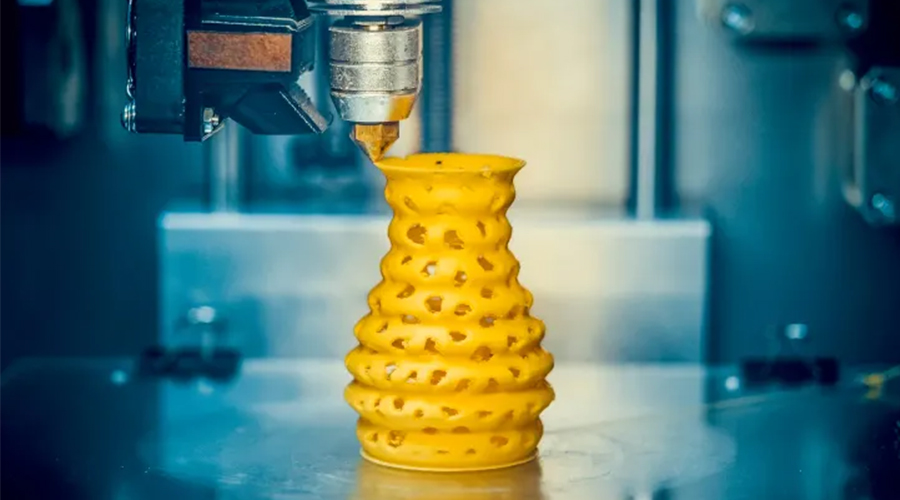4D is a new branch of 3D printing, and although many people don't know much about how 3D printing works, the technology has developed to another dimension. 4D versus 3D adds a dimension of time, which will definitely shine in some specific projects in the future.

Market demand for 3D printing materials continues to grow. Image from Apartmenttherapy
At present, 3D printing technology has become faster, more efficient and more affordable. By combining 3D printing technology with machine tools, 3D printing of industrial parts can be realized, which greatly reduces the manufacturing cost of precision parts and reduces the manufacturing time. It plays an important role in aerospace, medical architecture and automobile fields.
4D objects change over time
4D printing can be achieved by using shape memory materials with different characteristics to realize the response of components to changes in the external environment. This response is the "drive" effect of external stimuli on the material. Research in 4D printing has focused on developing smart materials that respond to external stimuli.
he technique adds a new element to the process, allowing the printed object to change shape over time. This growth element will not only play a role in the printing process, but also through the materials used for printing, such as hydrogels or shape memory polymers.
4D technology allows printed objects to change shape over time. Video from ApartmentTherapy
In theory, the material would respond to environmental factors such as heat, light and stress, just as plants and flowers do in nature. Experiments with 4D printed materials have shown that these objects can remember their shapes, but it is expected that 4D objects can also change size after printing, allowing large objects to be printed on smaller printers.
The technology could come in handy in the future for specific projects, such as self-assembled furniture, flexible water pipes that expand and stretch according to water pressure, or even medical stents that unfold only when a body part is identified that needs to be implanted.
Benefits of 4D orthodontics
The researchers brought 4D technology to the manufacture of orthodontic appliances by taking advantage of the ability of 4D printed parts to change shape over time, the fourth dimension.
Antarctic Bear has learned that more and more people will choose invisible appliances (transparent braces) for the sake of aesthetics. Dental clinics will generally tailor dozens of braces, wear a pair every 1-2 weeks, gradually adjust the tooth Angle, and finally achieve orthodontic. However, because of the need to wear dozens of braces, some trouble and waste. So is there a better technical solution?

4D orthodontics can reduce the related costs. Image from Prodways
For this appliance, the researchers focused on two main factors: considering the disadvantages of traditional materials and biological tooth movement.
In most popular appliance systems on the market, each appliance moves the tooth only 0.2 to 0.3 mm, or 1° to 3° per rotation, and each appliance is worn for approximately 14 days before being replaced with the next appliance. Therefore, the orthodontic cycle is very long and the cost is very high. On the other hand, shape memory polymer (SMP) is one of the new materials in the dental field, especially for orthodontic applications, which offers great potential for the application of medical materials.
A shape memory orthodontic device fabricated by 4D printing technology achieves consistent movement in orthodontic measurement and Simulation systems (OMSS). The result is that a single shape-memory orthotic can achieve almost as much malocclusion movement as 10 conventional orthotics can.